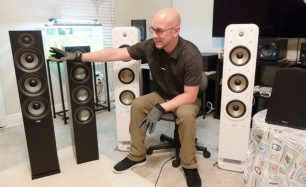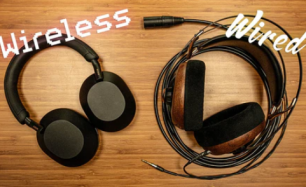The Evolution of Wireless Audio Technology
From tangled cords to seamless sound: how wireless audio changed the way we listen
There was a time when listening to music meant staying physically tethered to a device—whether through wired headphones or bulky home systems. But in the span of just a few decades, wireless audio technology has completely redefined how we consume sound. Today, whether you’re streaming your favorite playlist during a workout, joining a Zoom call, or watching a movie in surround sound, wireless audio delivers seamless convenience, high-quality performance, and an ever-expanding range of features.
The journey from analog to Bluetooth-enabled brilliance is one of innovation, accessibility, and style—and it’s not slowing down any time soon.

1. The Early Days: Infrared and Radio Frequency
Wireless audio started humbly, with infrared (IR) and radio frequency (RF) technology making the first waves. IR systems, similar to a TV remote, required a direct line of sight between devices, making them impractical for mobile use. RF systems offered better range but were prone to interference and inconsistent quality.
Despite their limitations, these early technologies set the stage for a world where sound could be transmitted without cables—a concept that would soon become mainstream.
2. The Rise of Bluetooth: A Game-Changer
The real breakthrough came with the introduction of Bluetooth technology in the early 2000s. Bluetooth offered a compact, efficient way to pair devices over short distances—perfect for phones, laptops, and, eventually, earbuds and speakers.
Early Bluetooth headphones had their drawbacks—limited range, sound compression, and battery life issues—but as the technology evolved, so did performance. Bluetooth 5.0 and beyond now offer faster connections, lower energy use, and support for higher-quality audio codecs like aptX and LDAC, bringing wireless listening close to wired fidelity.
Today, Bluetooth is the backbone of everyday wireless audio—from true wireless earbuds to smart home speakers and car infotainment systems.

…
3. Smart Features and Seamless Integration
Modern wireless audio devices do more than just play music. Thanks to integrated voice assistants, touch controls, and adaptive noise cancellation, your earbuds or headphones have become miniature command centers.
Tech like spatial audio and multi-device pairing enhances immersion and multitasking, while AI-driven algorithms help personalize sound profiles for individual users. Some models even feature biometric sensors that track your heart rate or adapt noise cancellation to your surroundings in real time.
It’s no longer just about cutting the cord—it’s about creating a personalized, intelligent audio experience.

4. The Future: Ultra-Low Latency and Enhanced Connectivity
Looking ahead, wireless audio continues to improve at a rapid pace. Low-latency Bluetooth codecs aim to eliminate audio lag, making wireless options ideal for gaming and content creation. Wi-Fi-based audio systems like those from Sonos or Apple AirPlay offer multi-room connectivity and higher sound resolution.
Expect more integration with wearable tech, smarter AI sound adjustments, and continued emphasis on sustainability and comfort.
Final Thoughts
The evolution of wireless audio technology reflects our desire for freedom, flexibility, and flawless sound. What began as a luxury has become an everyday necessity—one that continues to evolve in both form and function.
Whether you’re a casual listener or a die-hard audiophile, one thing is clear: wireless audio is no longer just the future. It’s the new standard.








